Antennarius commerson
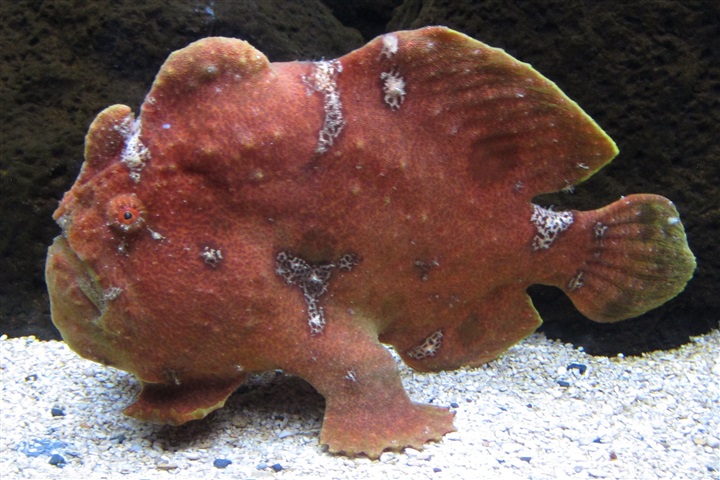
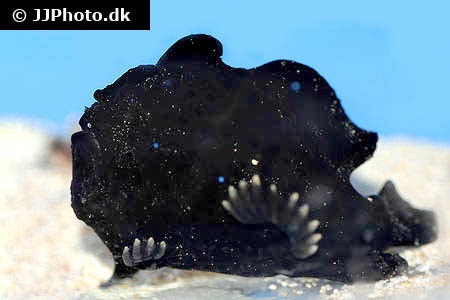
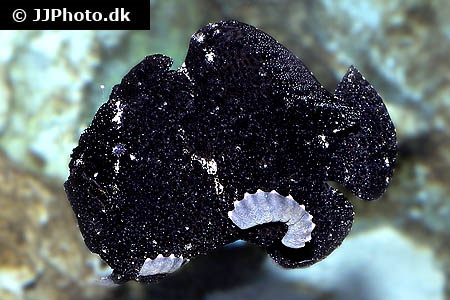
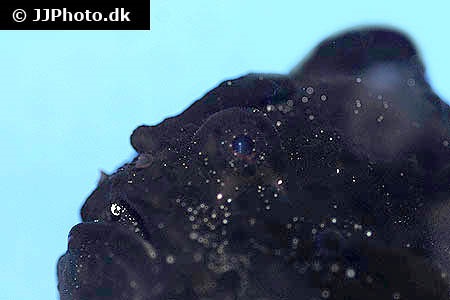
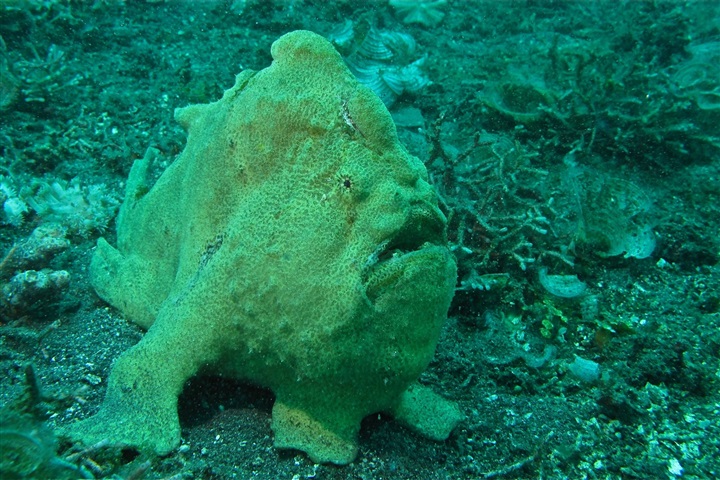
| Latin name | Antennarius commerson - (Lacepède, 1798) |
|---|---|
| Local name | Giant frogfish |
| Family | Antennariidae - Antennarius |
| Origin | East Indian Ocean, West Indian Ocean, Australia, The Red Sea, Indonesia, East Pacific, Central/West Pacific |
| Max length | 45 cm (17.7") |
| Minimum volume |
200 l (53 gal) |
|---|---|
| Hardiness |
Average |
| Suitable for aquarium |
Suitable for special aquariums |
| Reef safe |
Reef safe with caution |
| Aggressiveness | Peaceful |
| Recommended |
Fish Larger crustaceans (Shrimp, crabs...) |
|---|
This species does not like powerful circulation and has a need for calm areas in the aquarium.
This species can be kept in a small tank, if it is specifically equipped to meet its needs.
It is recommended however, to keep it in an aquarium which is larger then described above.
It is important to have live food ready when acquiring a Frogfish as it is hard to get it to accept frozen foods.
It is possible to "teach" it to accept frozen foods by waving it in front of the fish with tweezers or something similar.
A Frogfish has a large mouth so it can eat fish and crustaceans that are close to its own size.
It hunts by lying very still and waiting for its prey, when the prey comes close enough, it shoots forward and swallows it whole.
Take note; do not overfeed it, as it needs food only every 4 to 5 days, alternatively feed it more often but with smaller quantities.
When it is overfed, it can stop feeding for several weeks, but will usually start to eat again thereafter.
This species must be fed with an appropriately varied diet.
This species has the ability to change its colouring depending on the surroundings.
These fish can be either yellow, orange, green/brown or black
Frogfish do not move a lot, but are instead very skilled at camouflaging themselves and waiting for their prey to come close enough, at which point they jump out and swallow the prey whole. They will also slowly sneak up on their prey.
Changing colour is a part of their camouflage, therefore a Frogfish will not necessarily have the same colour in a domestic aquarium as at the dealer's.
To entice their prey, they have a fake lure with bait which protrudes from the top part of the head. They can move it around in different ways, depending on the prey and the light conditions. If their prey manages to bite off this lure, a new one will grown within a few months.
Because of their large mouths, they are most suitable for single species aquaria or a tank with large, peaceful fish. Frogfishes will typically only eat live food, but are otherwise well suited to aquaria. Do ensure not to overfeed or feed them with very large pieces of food, as they can die as a result of incomplete digestion.
Frogfish will inflate with water or air if threatened by another predatory fish or if they wish to float along with the current.
Small tanks can house Frogfishes fish, but the nutritional content of the water must be well monitored. The circulation must not be too powerful, as a Frogfish requires a quiet place to sit in wait.
A. commerson, A. maculatus and A. pictus are most active, and therefore, well suited to aquaria.
Corals and anemones that have a potent sting can damage Frogfishes, so avoid keeping elegance corals, anemones and the like in an aquarium with Frogfishes. Fish which graze on rocks will sometimes damage Frogfishes by inadvertently biting them.
When catching and transporting Frogfish make sure they do not breathe in air. It's best that they do not leave water at all, as they may end up floating around in the aquarium and dying. Wait at least a week after the fish last was fed to transport it. Otherwise they may regurgitate their last meal into the transport bag, which can be fatal.
| Aquarium trade | No |
|---|---|
| Distribution | Indo-Pacific and Eastern Pacific: Red Sea and South Africa (Ref. 4113) to Panama, north to southern Japan and the Hawaiian Islands, south to the Lord Howe and the Society islands. Referred to as Antennarius moluccensis by authors. |
| English common names |
Commerson's frogfish Giant stonefish Giant anglerfish Black angler |
| Danish common names |
Gul tudsefisk |
| French common names |
Antennaire géant |
Scott W. Michael. 2001. Reef Fishes volume 1 - TFH Publications / Microcosm Ltd. - (English)
Bob Fenner. The Bizarre Frogfishes, Anglerfishes, Order Lophiiformes/Antennariiformes pt. 1, 2 and 3 - Wet Web Media - (English)

